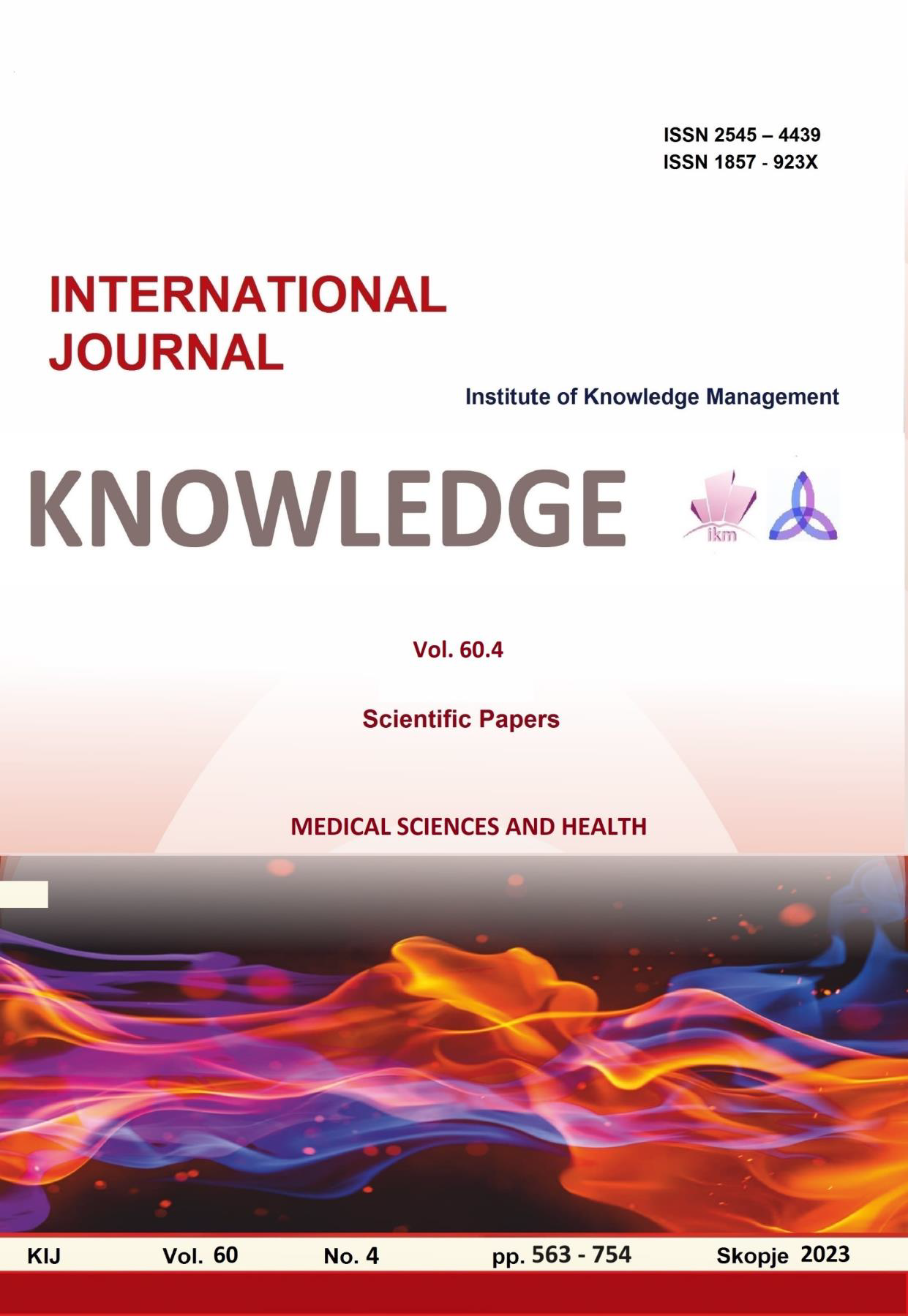ПРИМАРНА РЕКОНСТРУКЦИЈА СО ЛИЗГАЧКИ КУТАН ФЛАП ПРИ АБДОМИНОПЕРИНЕАЛНА РЕСЕКЦИЈА ПРИКАЗ НА СЛУЧАЈ
PRIMARY RECONSTRUCTION WITH SLIDING CUTANEOUS FLAP IN ABDOMINOPERINEAL RESECTION – A CASE REPORT
Author(s): Aleksandar Mitevski, Svetlana Jovevska, Vesna Dukovska, Sanja Markova (Baldzieva), Petar MarkovSubject(s): Social Sciences, Sociology, Health and medicine and law
Published by: Scientific Institute of Management and Knowledge
Keywords: Abdominoperineal resection;colorectal cancer;squamous cell carcinoma;radiation therapy;cutaneous flap
Summary/Abstract: Abdominoperineal resections are the most common method for the treatment of rectal cancers localized in the distal parts of the rectum, but also for the treatment of other pelvic malignancies. A significant challenge for performing an adequate abdominoperineal resection is the treatment of patients with preoperative involvement of neoadjuvant radiotherapy. Damage to local vascularization can be a determining factor for postoperative local complications and the possibility of not achieving the planned functional and aesthetic effects planned by the surgeon. The width of the excision and the creation of complicated defects make an additional contribution to the provision of tension free closure of the operative wound. The closure of such perineal defects has led to the development of numerous techniques for perineal reconstruction including transposition of adjacent tissue, pedicled, perofator and free flaps all with the aim of bringing vascularized tissue to the site of the defect. The choice of an appropriate flap depends on the shape and size of the defect, the skill of the surgeon in performing different flaps, the availability of adequate vascularized tissue in patients after radiotherapy, previous operative treatments in that region and general comorbidities of the patient. In this case report, we describe the treatment of a patient with rectal squamous cell carcinoma who received neoadjuvant radiation therapy. An abdominoperineal resection (amputation) of the rectum was performed on the patient. The defect after the cylindrical excision of the rectum and anus is repaired by placing a resorptive vicryl mesh and by transposition of two sliding incisions. Knowledge of important principles of plastic and reconstructive surgery allows the use of various reconstructive options during perineal resection. According to the experience so far, the conclusion is that there is no ideal approach to reconstructing the perineum, nor an approach that will suit all cases equally. In some patients, it is possible to use several types of incisions simultaneously, depending on the need to close the defect. Therefore, careful post operative follow up of patients is necessary and, based on the accumulated experience, better choices can be made for each patient. Morbidity associated with the primary suture is mostly due to tension retention of the composed tissues, especially at the localization where the radiation therapy was applied.
Journal: Knowledge - International Journal
- Issue Year: 60/2023
- Issue No: 4
- Page Range: 595-599
- Page Count: 5
- Language: Macedonian

